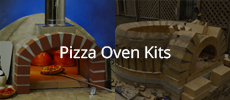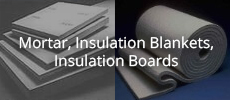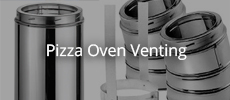Gulf , thanks for pointing me to that post. Yes, i am planning on doing the straight in bricks for the gallery. I am just wondering how to continue from there with the herringbone pattern. Two options as i has drawn 3 or so posts up.
One has small triangular pieces, then a complete brick.
The other has a triangular pice cut from the first "row" of bricks.
I have seen both and was wondering if there is a preference. I am sure both will work, but was just wondering if there is a preferred way to lay these bricks
Announcement
Collapse
No announcement yet.
Planning my 32" cast oven
Collapse
X
-
David, yes, I understand that part. I was more wondering about the pattern from the gallery entrance bricks to the herringbone part. I guess it does not really matter.
Leave a comment:
-
It doesn’t really matter. The ragged edge of the floor bricks can be trimmed a little, but the insulation will cover it anyway. That is one of the big advantages of building the dome on top of the floor rather than the dome being outside the floor, which requires more precise floor brick cutting.
Leave a comment:
-
OK, another question as I am going to pick up my firebrick tomorrow.
Looks like I can conveniently use a whole brick for the gallery portion.
After that I have seen two layouts on this site:- cut a triangular piece of the first set of bricks and butt them up against the bricks in the gallery (left in the drawing attached)
- use a small triangular piece to start with (right in the attached drawing)
I am tending towards option 1, might provide a cleaner and more stable entrance, but does it really matter?
Any suggestions?
Leave a comment:
-
Sidetrack , I saw your comment on creating a sectional dome in Kris S's build threat. Didn't want to hijack that thread. The idea is intriguing.
I am planning for my own cast build. Base is complete. I have a few weeks wehre I won't be able to make much progress other than planning the final details.
Here are some thoughts:- make three sections, and a top part, would have to make sure that the top (plug) is tapered so that it does not fall through
- Maybe use thin cardboard to keep the seams thin
- Maybe fold the cardboard into a wedge shape I don't think I could do the nice bullnose that you have drawn, but maybe a triangular shape
- Or maybe even simpler, make a step in the homebrew 1" wide (see attached sketch)
- would also have to place something between the firebrick and the dome (cardboard?)
- Let the Homebrew cure for 48 hrs, remove the sand, fix any imperfections on the inside, let wet cure for at least another 5 days
- Once everything is cured, I would have to take the dome apart so that it can be put together again using high temp mortar.
- Or simply burn out the thin cardboard and let it settle?
Any thoughts are welcome.
Leave a comment:
-
David, thanks, yes, got the lime from a building supplier and the invoice says hydrated lime, so should be OK.
really appreciate all your input!
Leave a comment:
-
As pretty much any powdered clay will suffice, the mortar clay is ideal. I'm not sure about the typeS lime as in our country we don't have that classification, but someone else will chime in. If you got it from a building supplier it's bound to be the correct item. The fine detail may also refer to it as either hydrated or hydraulic lime.
Leave a comment:
-
david s , thanks for your comments. I live in Los Angeles, so doesn't rain too much, the soil should be pretty dry below the concrete most of the time. Let's hope the Foam Glass does the job. No weep holes for me then.
I'll try to make the Foam Glass as big as possible with the material i have, so it protects as much if the insulation as possible.
I'll see if I can find graded sand. With all the effort that goes into this Iight just as well try to use the best I can.
The clay I got simply says Mortar Clay on the bag, the invoice says fire clay. I think I have seen others use this product on this forum.
The lime is Type S, which if I recall is the correct one as well.
David, would be great if you could confirm my material choices
Leave a comment:
-
I'd be concerned about the supporting slab being on ground level as concrete is porous. I use additives in our precast supporting slabs that waterproof, or reduce permeability to prevent water wicking up from the stand.
The weep hole in your slab could be superfluous in your case and you wouldn't want them to act as an entry point for water. Using foam glass on the bottom should deal with the problem adequately.
Regarding the sand in the castable, any should work ok, but generally a mix of grain sizes is better (called graded sand) The clay does a good job of holding the materials together. You should make the mix pretty stiff to "ball up" constancy, ie. make the mix up, take a cricket (or baseball sized ball and toss it 2 ft into the air and catch it again. Too wet it falls apart and wants to slump when placed on the mould. Too dry it falls apart and when placed on the mould results in voids.Last edited by david s; 10-02-2021, 09:08 PM.
Leave a comment:
-
OK, made a bit more progress. The slab and wall are complete, and I have most of the materials.
I did change a few things in my plans:- Door opening: went back to 19" and reduced the thickness of the insulation in the gallery from 2" to 1" of fiber blanket It seems 19" opening is somewhat of a standard for a 32" diameter oven
- Decided on a 1.5" "edge" against which the door will close, I felt 1" may be a bit small
- I think I will go with 3" of fiber blanket, will see how it feels once 2" are on, I have enough for 3".
- I will try to see if I can get the vcrete layer down to 1" or so, I don't have a lot of space around the oven, maybe add some clay or make it a bit richer (or stick with 2" blanket).
Floor insulation- Bought 2" of Foamglass and 2" of CalSil board.
- I don't have any weep holes, since the slab is on the dirt (there is a bit of gravel between slab and dirt. Not sure if I should still drill weep holes or if it would cause more problems that it solves
- I'm hoping that the Foamglass will keep the CalSil and floor dry
- Any suggestions here?
I think I have enough foamglass to extend it so that is is also below the Vermicrete. Is that a good idea? Any disadvantage? I am thinking- 2" foamglass all the way to the outside of the Vcrete
- 2" CalSil to the outside of the fiber blanket
- 2.5" firebrick below the cast dome
OK, one more questions regarding the materials. I just want to make sure I got the right stuff before I spend all the time and energy building the dome- Sand: I got #30 Silica Sand. They also had one grade finer, not sure if that would have been a better choice
Leave a comment:
-
Made some progress over the last few weekends, the base is cast and I am trying to figure out the exact dimensions of the oven that will fit into this space. Any input would be very much appreciated!
I placed a template on the slab that shows the location of the oven. It will be tight, but the template has 1" for the final render as well as approx. 1" extra round the outer render, so it looks like it will barely fit.
To make it fit I had to:- Reduce the opening width to 17" (I had planned 19")
- make the area where the door is going to rest against 1" wide
- reduce the wall thickness of the gallery to 1.5" Homebrew, 1.5" fiber blanket, 1.5" vermicrete, 1" render
I am also wondering if reducing the wall and insulation thicknesses to 1.5" is a good idea. In principle the main heat and therefore insulation requirement is in the main dome, correct?
Will a door close properly with only 1" overlap? I also want to use the oven for making bread the day after.
The other option of course is to reduce the size of the oven to maybe 30" diameter, which would give me 2" of extra room around the oven. Any thoughts?
A drawing as well as photo are attached.
Thanks
Leave a comment:
-
david s , thanks, appreciate the input.
Looks like the only Vermiculite (or Perlite) that I can find here is the Vigoro brand from Home Depot. I'll just have to go with that. Maybe if I have some ceramic blanket left I will just add more ceramic blanket (especially to the top). Then maybe the mix doesn't make that much of a difference, since it is already well insulated.
It will still be some time before I get to that stage anyway.
Thanks
Leave a comment:
-
The smaller the grains are the more workable the mix becomes, but the finer grade requires more water. I compromise and use a medium grade which requires 3 parts water for every 10 parts vermiculite or perlite. I’ve also found a 50/50 mix of vermiculite and perlite makes a more workable mix than either of the two alone. Also a little powdered clay added to the mix helps make a lean brew more workable. If you work out the volume required by using the volume of the perlite or vermiculite you’ll probably end up short because there is a reduction in volume when you mix with cement and water. Add 20% to account for this. Don’t use a mixer as it degrades the grains and sticks to the blades and sides of the mixer. Fold the dry materials together in a barrow then add 1/3 of the water at a time, mixing it in gently.Last edited by david s; 09-01-2021, 04:31 PM.
Leave a comment:
-
Thanks Ronstarch and JRPizza. Looks like it might have enough space in front of the oven if I place it in the corner. I will have to mock it up and use a rake or something to try it out.
On the Perlite / Vermiculite I calculated that I need approx. 3.2 cu ft if I use the 10:1 mix (which I will try) for a 2" thick layer.
I just looked at Home Depot and they now have the Vigoro Vermiculite in 2 cu ft bags at $21, not too bad, since I only need two bags. Thanks for making me look again.
They also have the Vigoro Perlite in 2 cu ft bags at $17. Any preference? Would either of them work? I remember reading something about the size of the perlite/vermiculite granules, any concerns?
Leave a comment:





Leave a comment: